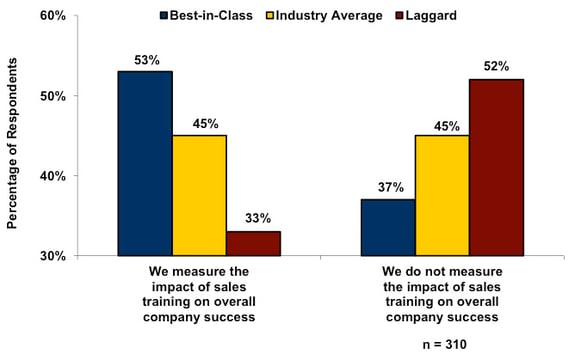
As an analyst focusing on Sales Effectiveness, I am in frequent contact with senior B2B sales leaders. Too often I hear “if we have a really good product, have purchased a great prospect list, and hire experienced reps, shouldn't it be relatively easy for our reps to make their numbers?”
This may be the case for a few sales organizations lucky enough to be selling into a "hot" market, but most organizations face challenging sales environments. Obviously — and hopefully — very few of these sales leaders are naïve enough to believe they don't need to train their sales teams. Still, why is it that some sales leaders downplay the importance of a sales training culture? Are they drinking so much Kool-Aid that they are blinded by the apparent wonder of their product? Are they so impressed at their own hiring skills that only “A” players, who can obviously hit the ground running, manage to make the team?
Whatever the reason why some companies throw up barriers to substantial sales training, Aberdeen’s five-year Sales Training research data continues to associate this behavior with the weakest performance results, both for measurable sales effectiveness KPIs as well as overall corporate performance. Conversely, Best-in-Class companies — defined as those with the most reps achieving quota, and the best annual improvement in growing revenue and deal size — remain far ahead of the curve in embracing a wide variety of sales training best practices that I will highlight in subsequent blogs. Replicating the strong performance results of these top-performing companies, among the 310 total organizations surveyed, is very feasible for sales leaders seeking to achieve better numbers: all they need to do is follow the example of their peers in implementing the specific best practices and corporate capabilities that have led to such success stories.
In order to execute on optimal sales training strategies, of course, the typical training professional needs to know that their company supports the overall training effort. This is relatively common among all survey respondents, with 72% indicating that “top-level executives within our company are active sponsors of our sales training initiatives.” When we correlate this validation with performance results, however, we see that fully 82% of Best-in-Class firms report this organizational capability, while only 60% of the worst-performing Laggards do so. For sales leaders who need to convince the C-Suite that sales training — not just the initial event or onboarding, but ongoing reinforcement of best practices — is essential, the bottom-line mentality required of senior corporate executives should respond positively to Figure 1. Here, the V-shaped results paint a clear picture: Best-in-Class firms are far more inclined to directly link the measurable results of sales training initiatives with the financial success of the enterprise as a whole.
Figure 1: Linking Sales Training with Corporate Results

Source: Aberdeen Group, September 2012
Here are additional data points that any CFO would love, with which an astute supporter of sales training should be armed:
- Best-in-Class sales organizations spend more than twice as much as under-performers on externally-provided sales training, on a per-rep / per-year basis; $397 vs. $177.
- As a percentage of overall training expenditure, 28.8% of budgeted dollars are allocated to the sales function. This level is higher among the Best-in-Class, at 29.8%.
- Best-in-Class companies increased their sales training expenditure from last year to the current year by 7.5%. This number drops to 5.0% among Industry Average firms and a1.6% among Laggards.

